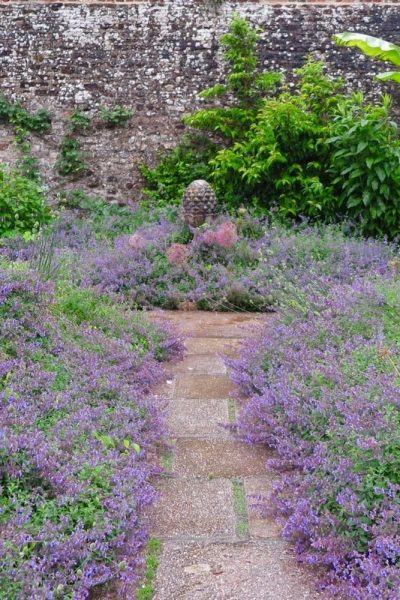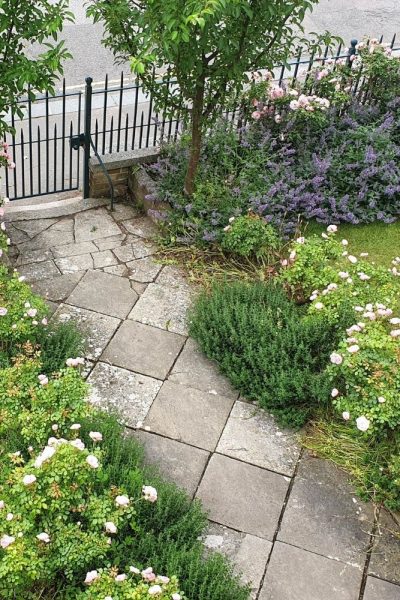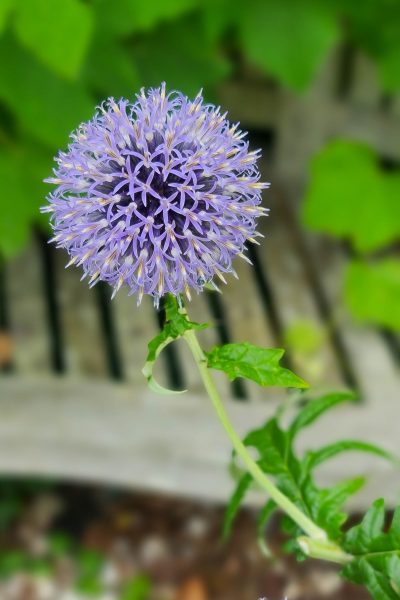Resilient flowers are a necessary a part of a profitable backyard.
Nonetheless fastidiously you select the appropriate vegetation on your climate, soil or zone, there’ll at all times be the surprising climate occasion. Right here in South East England, we normally have heat, however very dry climate in the summertime.
However this 12 months, we’ve had double the conventional summer season rainfall. And it’s been intermittently cool and windy. Flowers have been battered and blown about, or haven’t come out but.
So the celebrities of the present have been probably the most resilient flowers and vegetation.

I’ve recognized 5 resilient flowers I personally have discovered each robust and exquisite. Then I checked out what many main horticultural associations and plant sellers needed to say about them.
So these 5 flowering vegetation will face up to each dry and moist climate, a variety of soils and are additionally hardy throughout a variety of zones or climates. They’re additionally rather less fussy about solar and partial shade than many different flowering vegetation.
Plus -at the top of this submit, I’ve added a few good performers in my backyard which could swimsuit you. However these final two will include a hazard warning. So don’t plant them till you’ve checked them out for the place you reside.
This submit focusses on flowers as a result of many shrubs, bushes and decorative grasses are resilient. The problem is to find resilient flowers for the border.
5 resilient flowers on your backyard (+ 2 warnings!)
Discover out extra about every flowering plant and whether or not it would fit your backyard within the submit under.
- Oakleaf hydrangeas (Hydrangea quercifolia)
- Cosmos (Cosmos bipinnatus)
- Catmint (Nepeta)
- Globe thistle (Echinops ritro)
- Roses – there’ll be one for you
The 2 vegetation I ought to warn you about are Bear’s britches (Acanthus mollis) and Japanese anemones (Anemone x hybrida). They’re lovely and might work in your backyard. However they will unfold too vigorously. And they’re additionally forbidden in some components of the world.
Oakleaf hydrangeas – probably the most easy-going hydrangeas
Eleven years in the past I planted an oakleaf hydrangea (Hydrangea quercifolia ‘Snow Queen’) beneath a tree and beside a wall. I actually didn’t know a lot about gardening on the time! It is among the most troublesome positions in any backyard. Most different vegetation I’ve put there haven’t survived.

The distinctive oak leaves of Hydrangea quercifolia or oakleaf hydrangea. This plant has thrived in a spot the place most vegetation quit. That is ‘Snow Queen.’
However the oakleaf hydrangea is trying so fairly! It has white, conical flowers. And within the autumn, it has lovely wealthy pink foliage.

Oakleaf hydrangea altering color for autumn.
Though hydrangeas are fairly resilient vegetation, most do droop in a chronic heatwave. I’ve needed to water my different hydrangeas in actually sizzling, dry climate. However I’ve by no means watered or fed my oakleaf hydrangea as a result of it’s too distant from the hose. Some years I even neglect to prune it. It has survived complete neglect.
Most hydrangeas are happiest in partial shade, however the oakleaf hydrangea can deal with full solar, too. Based on the RHS, it may be planted in North, South, East or West dealing with positions. And it may well address uncovered or sheltered positions.

Hydrangea quercifolia is among the prettiest and most resilient flowers in my backyard.
It’s additionally extensively quoted as being rabbit and deer resistant. However, as Rosy Hardy of Hardy’s Cottage Backyard Crops explains in Perennials Made Easy, all vegetation can get eaten by a deer or a rabbit someplace on this planet.
Oakleaf hydrangeas come from the US, the place they’re hardy between Zones 5-9. In order that they’ll survive UK, most European and Australian winters with no downside.
Cosmos – probably the most resilient flowers for a border
I’ve grown cosmos (Cosmos bipinnatus) nearly yearly. It at all times come up trumps, regardless of the climate. Though I primarily develop pink or pink cosmos, there are some lovely white ones, and in addition lemon yellows.

As you useless head cosmos, they bush out, pumping out extra flowers and delicate foliage because the summer season goes on. Additionally now obtainable in white, pale pink, yellow and orange.
Hold dead-heading cosmos all through the summer season so as to get pleasure from flowers till the primary frosts. In any other case I’ve by no means personally both fertilised or watered it, even within the driest summers. And it’s trying good on this somewhat moist summer season we’re having.
Cosmos is an annual, so though it’s thought-about hardy in a really big selection of areas, it doesn’t survive the winter. You plant new seed once more each spring. Nonetheless, Sarah Raven additionally suggests planting cosmos seeds beneath cowl in September if in case you have a greenhouse or potting shed.
Cosmos does choose full solar. I’ve grown it on the sting of certainly one of my East-facing borders, nevertheless it strained to succeed in the sunshine and by no means appeared absolutely joyful. And once I checked the RHS, BBC Gardeners World, Sarah Raven and US gardening blogs, The Spruce and Gardening KnowHow, all of them confirmed this.
Nonetheless, all of them diversified their recommendation on soil. Some stated cosmos should have dry, poor soil. Our soil is dry, however fairly wealthy. So I might interpret that as ‘cosmos is fairly joyful on most soils.’
Cosmos is cherished by pollinators. And though it self-seeds, it isn’t thought-about too aggressive within the UK, Northern Europe or Australia. However there are a number of locations within the US the place it’s on an ‘invasive vegetation’ listing.
Catmint/Nepeta – even much less fussy than lavender
A good friend advisable I develop catmint (particularly Nepeta ‘Six Hills Large’) as a result of it’s much less fussy than lavender. And lavender is not thought-about fussy – though it hates damp soils. This was once I was starting to find out about gardening. I believe he may see I wanted ultra-resilient flowers and vegetation.
There are a number of completely different styles of nepeta. It has grey-green foliage and spikes of blue, white or pink flowers. I’ve grown the taller one, ‘Six Hills Large’, in each borders and pots. I’ve discovered it indestructible. The flowers can final from June to September. In the event that they over, chop them again and also you’ll get a second flush. In any other case you by no means need to feed or water it, or definitely I by no means have.

Nepeta lining a path. If you happen to’re after resilient flowers, nepeta is much more easy-going than lavender.
Nepeta is cherished by wildlife, and is ‘rabbit resistant’, in keeping with plant grower Claire Austin of Clare Austin Hardy Crops. That may imply {that a} very hungry rabbit can have a go. But it surely’s much less more likely to be eaten than a few of your different vegetation.
A good friend of mine was dividing nepeta. She dropped a clump off for me in my entrance backyard. I forgot about it. The subsequent time I appeared, it had taken root. So that you barely want even to plant it.
There may be some debate about whether or not nepeta is an acceptable companion for roses. A number of websites suggest it. However well-known rosarian Michael Marriott of David Austin Roses instructed me it was not a sensible choice because it’s fairly vigorous. Roses hate an excessive amount of competitors for vitamins.

I planted Nepeta ‘Six Hills Large’ (high proper of pic) beside the roses in my entrance backyard. Michael Marriott instructed me it was not a good suggestion. I believe the roses did develop much less vigorously when the nepeta was there, though it’s onerous to inform.
Many websites additionally suggest rising nepeta in full solar. However my nepeta has been high quality in full solar and partial shade, and I’ve come throughout others who agree.
After I come throughout contradictory data on plenty of completely different websites, I assume that this implies completely different individuals have completely different experiences. So I’d suggest no less than attempting nepeta in partial shade. For extra about selecting vegetation for shade, see this submit.
Globe thistle – cherished by pollinators
I’ve bought two clumps of globe thistle (Echinops ritro ) in my backyard. Each flourish regardless of the climate. This can be a member of the thistle household. Thistles are labelled ‘invasive’ (and due to this fact typically unlawful) in some components of the world.
Nonetheless Echinops ritro appears to be accepted as non-invasive in each one of many dozen nationwide and worldwide blogs and web sites I consulted on the matter. It even has an Award of Backyard Advantage from the RHS. However test it out the place you reside earlier than planting it.

The taller echinops varieties want help. I didn’t help this one and it’s sprawling all over the place. And this blue Echinops ritro positively grows to 6ft, which was not what I anticipated.
I used to be, nevertheless, puzzled to seek out that everybody stated it grows to 2ft-4ft. Mine is taller than I’m (5’5″). It’s a exceptional presence within the backyard. The white number of echinops grows as much as 6ft, however mine is certainly not white. Mine is blue. It’s adored by pollinators.
There have been additionally combined messages over whether or not it should develop in full solar. One in every of mine is in full solar. The opposite is in an East-facing border, the place I’ve had bother rising sun-loving vegetation up to now. Each are towering and wholesome.

Blue globe thistle (Echinops ritro)
So, as soon as once more, I’d counsel giving it a go and seeing what occurs.
Roses – there’ll be one for you!
I actually thought fastidiously earlier than together with roses as ‘resilient flowers’. So many rose varieties ‘ball’ when it rains (the buds and flowers flip into mildewy balls and don’t open correctly.) Roses additionally want dead-heading and what number of flowers you get depends upon whether or not you feed them.
However some are extremely resilient. They are surely. And there’s a rose selection for whichever unattainable scenario you end up in. My sister-in-law lives in Vermont, with 4 months snow a 12 months. She has a list of Sub Zero Roses. Though I’m undecided how profitable she was. And Impatient Gardener blogger Erin has had bother with getting roses by means of her Zone 5 Wisconsin winters.
But two of my roses have bloomed fortunately by means of moist summers and super-dry ones. One is ‘Bonica’ and I’ve misplaced the identify of the opposite. It appears to be like like Eustacia Vye, which was bred by David Austin for its ‘Moist, Windy & Uncovered’ listing. Each tolerate full solar and partial shade and develop on a variety of soils. They flower from mid-summer to late autumn, if dead-headed often.

‘Bonica’ roses in my entrance backyard, regardless of all of the moist and windy climate.
Rosa rugosa, the wild rose, can be very resilient. However it’s on the UK’s Schedule 9 of the Wildlife & Countryside Act. Meaning it’s thought-about invasive, particularly in coastal areas. It’s an offence to develop it within the wild or permit it to develop within the wild. Because it’s fairly troublesome to forestall vegetation from escaping out of your backyard, which means a accountable gardener will suppose twice about planting it.
It’s nonetheless offered, nevertheless, by many respected firms and organisations. I checked six main plant data/gross sales web sites. All offered Rosa rugosa. None talked about the difficulty of Schedule 9. So it’s right down to us as gardeners to determine how we really feel about together with damagingly invasive vegetation in our gardens.
Thugs – flowers which are simply too resilient!
Any plant that grows nicely in lots of conditions has the potential to develop uncontrolled in some locations.
For us, as gardeners, it’s merely irritating when a plant takes over our borders and refuses to be dug up.
But when vegetation go rogue within the wild, they usually out-compete vegetation that normally develop there. Bugs, algae, mosses and different organisms that depend on the indigenous vegetation can die out. Then the species that depend on these organisms can wrestle. And the chain goes on.
So, in lots of components of the world, there was an effort to determine backyard vegetation which will harm the broader atmosphere. The UK has Schedule 9, as I discussed earlier. Other than botanists getting cross on Twitter, I’ve by no means seen anybody take any discover of it. Although I might be delighted for those who may contradict me.
Within the US, Canada and Australia, bans on invasive species of vegetation are taken way more critically. So verify which vegetation are thought-about only a bit too pleasant the place you’re.
However there are much less vigorous varieties…
Within the UK, Acanthus mollis (Bear’s britches) isn’t listed beneath Schedule 9. However it’s a spreader. After you have it in your backyard, this can be very troublesome to dig it up once more.
But it surely has an exquisite sculptural form, and withstands something the climate can throw at it.

Photographer Mikael Buck got here to experiment with photographing my silver birches. He introduced this smoke machine which exhibits off the Acanthus Mollis ‘Rue Ledan’ very nicely. You’ll be able to see what an exquisite plant it’s and it’s fully trouble-free.
I’ve a much less invasive selection referred to as Acanthus mollis ‘Rue Ledan’, obtainable from Sarah Raven. It has pure white spikes as a substitute of purple tinted ones. It’s adored by pollinators. I’ve had it for over seven years and it hasn’t unfold too far. Though it’s time to divide the clumps.
Japanese anemone – the prettiest of thugs
I hesitated whether or not to suggest Japanese anemone (Anemone hupehensis/ Anemone x hybrida) as a result of upon getting it in your backyard, it’s there for all times. I made a decision to alter my borders spherical – twice! On each events I had knowledgeable gardener dig out the Japanese anemones. On each events the clump was again throughout the 12 months.

Japanese anemones (Anemone x hybrida – presumably ‘September Attraction’) So fairly. Such a thug.
Nonetheless, it is rather fairly and fuss-free. So I went on-line to see what anybody else needed to say. The primary website stated that Japanese anemones ‘thrive in shade and address dry soil.’ Very a lot my expertise!
Three traces later, the identical submit instructed me I need to plant Japanese anemones in ‘moist… soil in gentle shade.’
Howdy? Have we simply contradicted ourselves?
Nicely, my Japanese anemones are in a dry, shady border, which I by no means water. We’ve got round 26″ of rain a 12 months, which is taken into account a ‘dry’ local weather.
I trawled the web sites of different horticultural organisations and plant sellers. Some stated that Japanese anemones preferred moist soil. Others that it wanted well-drained soil. And others, in fact, specified ‘moist, nicely drained’ soil. Nonetheless, all agreed that after established, that is an exceptionally straightforward plant to develop.
There appears to be common settlement that Japanese anemones gained’t like very moist or boggy soil, particularly in a chilly winter. So I believe you can strive Japanese anemones in any soil until your backyard is definitely soggy.
‘September Attraction’ has an RHS Award of Backyard Advantage and a very good for pollinators badge. Nonetheless, different websites stated that Japanese anemones have little or no pollen so that they’re not good for pollinators. I’ve simply seen two bees onerous at work on my pink Japanese anemones.
One website even stated it was ‘rabbit resistant.’ Nicely, it’s price a strive…
Pin to recollect resilient flowers on your backyard
And do be a part of us at no cost weekly emails with ideas, concepts and inspiration on your backyard.

